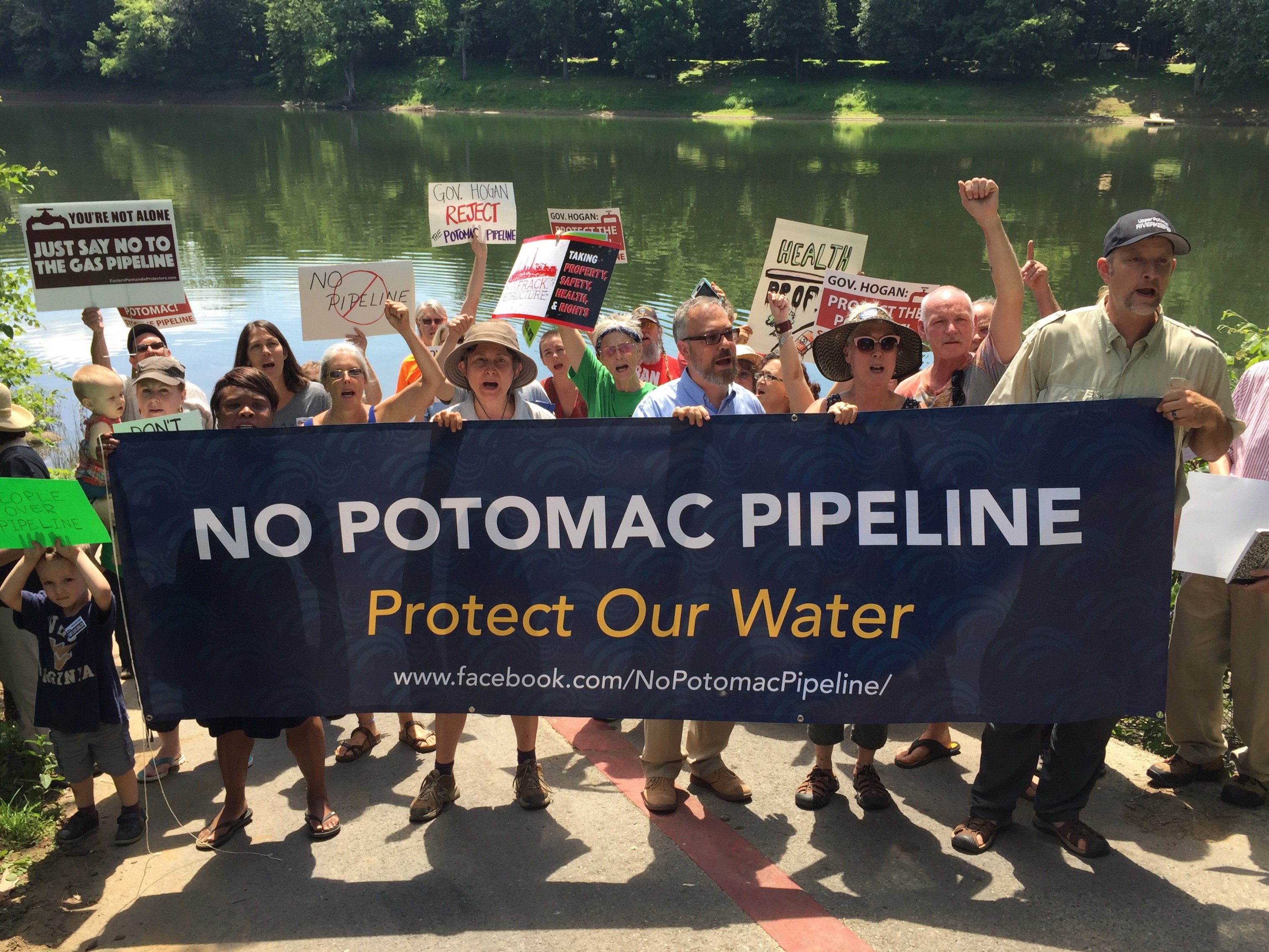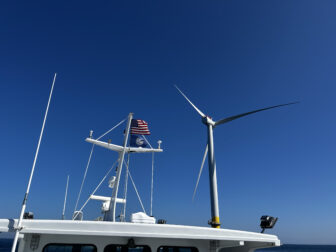The “No Potomac Pipeline” campaign began in early 2017 as a broad coalition of citizens, elected officials, and environmental advocates came together to stop TransCanada’s proposed pipeline under the Potomac River.The Eastern Panhandle Expansion Project, known as the “Potomac Pipeline,” could threaten the drinking water of millions of people in the region. Its construction would require a drilling method called Hydraulic Directional Drilling, which uses millions of gallons of bentonite slick water, typically laced with diesel fuel, to drill longitudinally under rivers and other structures.
The entire pipeline project would impact 19 streams and 10 wetlands in Maryland and 100 streams and wetlands in West Virginia. The risk in this region is exacerbated by the sensitive karst limestone geology underneath the river, characterized by underground drainage systems with sinkholes and caves, and openings that could allow for the migration of pollutants into underground aquifers.
Landowners in the pipeline’s path are concerned for their direct safety and impacts to their property values. If a severe accident like a pipeline explosion occurs, the blast radius could be up to a half a mile. But for some, the pipeline is routed to come within 500 feet of their homes.
Landowners like Patricia Kesecker, a West Virginia farmer, are concerned about the use of eminent domain to acquire private land for a private pipeline company. The Kesecker family has been sued over access to their property, while the family wholeheartedly rejects a pipeline crossing their land.
For other environmentalists, opposition to the pipeline is an imperative to act on climate change by moving away from fossil fuel energy and towards clean, renewable energy. This pipeline would deepen our dependence on fossil fuels at a time when scientists agree that we must transform our energy system to maintain the stability of our climate.
The fight against the Potomac Pipeline really kicked off in June 2017, when the coalition announced a series of camp outs along the C&O canal to draw attention to the pipeline’s risks. Inspired by Standing Rock protests, more than 100 activists from Maryland, West Virginia, and the District of Columbia camped out to voice their opposition to the pipeline over the course of the summer.
In August, the protest encampments reached their peak with “kayaktivism.” Over 100 residents came together to support protesters paddling in kayaks down the Potomac River, calling on Maryland Governor Larry Hogan to reject the pipeline.
On October 14th, 2017, over 300 Maryland and West Virginia residents came together and held hands across the James Rumsey bridge that sits over the Potomac River and connects the towns of Sharpsburg, Maryland and Shepherdstown, West Virginia. It was a powerful display of unity against TransCanada’s planned Potomac Pipeline, which is currently routed to run underneath the Potomac River.
In December, 200 landowners and advocates came together to testify at a Maryland Department of the Environment public hearing on the pipeline permit. If Maryland Governor Larry Hogan is serious about protecting Maryland’s clean water, he must direct his administration to deny the water permit necessary for its construction.
And on January 22nd, 2018, the coalition made another stand at the second MDE hearing on the pipeline in Hancock, MD — but this time, it was to boycott the hearing.
Hogan Administration officials have been neither fair or transparent in how they’re dealing with this pipeline. They have refused to carry out a full environmental review as permitted under the Clean Water Act. Instead, they intend to hand over most of the pipeline permitting process to Trump agency officials. This would ignore the sensitive nature of the region, as well the immense importance of the Potomac River as a key drinking water source for millions of people. That’s why a coalition of environmental organizations including CCAN, the Sierra Club, Food & Water Watch, Potomac Riverkeeper, Waterkeepers Chesapeake, and others have come together to boycott this flawed regulatory process, and why hundreds of people from all walks of life have come together to oppose it.
Hundreds of people from all walks of life have come together to oppose the Potomac Pipeline. The Hogan Administration must carry out a full assessment of this pipeline’s impacts to our land and water — which we’re confident would show that it simply cannot be done safely.
But the clock is running out to stop it, we have until March 15 before a final decision is made. From now until then, we’ll be posting to social media to connect with decision makers and our neighbors to spread the word and STOP this pipeline to protect our water, our communities, and our climate.
Help keep the momentum going by adding your voice, and pictures, to our #MyPotomac campaign.






